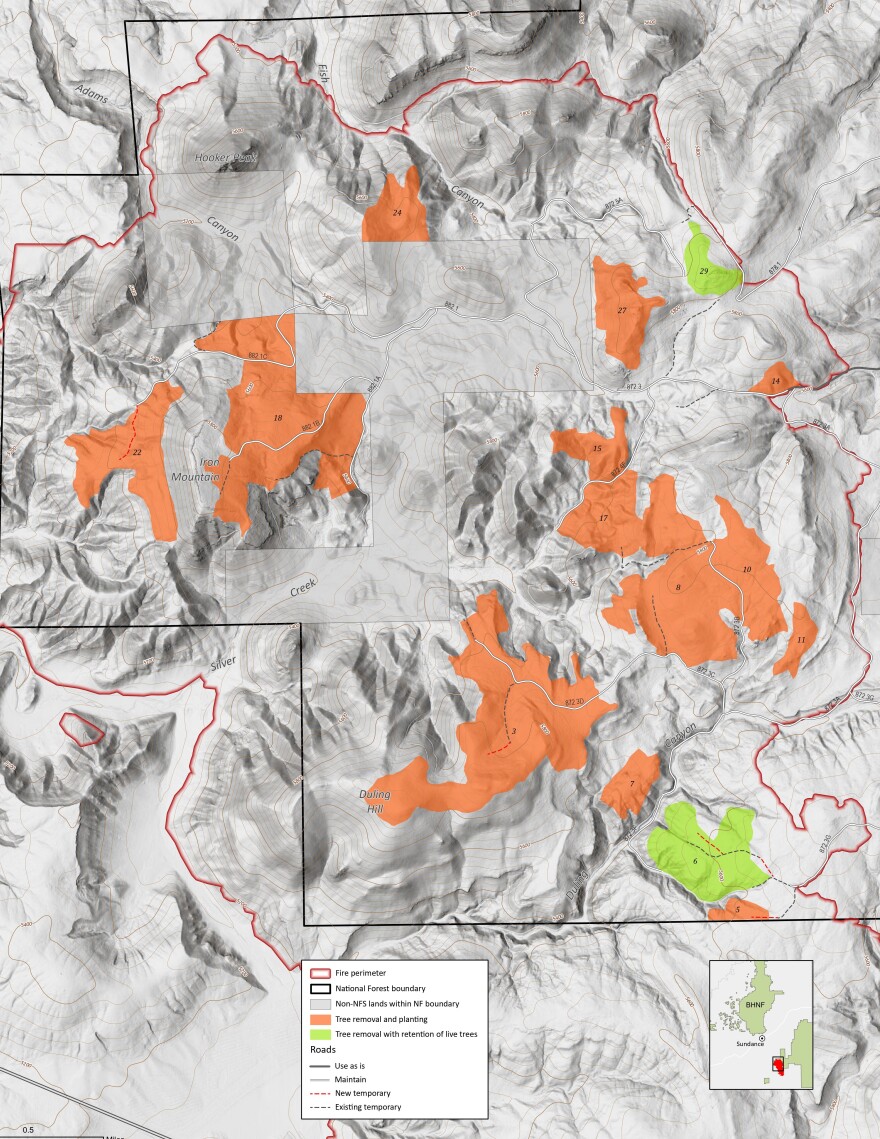The US Forest Service is developing a recovery plan for the 3,232 acres of national forest burned by the Fish wildfire.
The agency wants to recover timber from burnt portions of land, clear debris and eventually plant saplings to replace some of the damaged trees. The proposed recovery efforts would take place south of Sundance, WY.
Michael Gosse is District Ranger for the Bearlodge Ranger District, which includes the northwestern Black Hills.
“Those are areas that were pretty heavily timbered because of the inaccessibility of getting equipment and being able to do any type of timber harvest in those areas,” Goose said. “We didn't have any roads on top of Dueling Hill or Iron Mountain, so when the fire started in that area it burned pretty hot and a pretty high intensity level.”

According to Gosse, some dead trees can produce usable lumber. He says removing dead trees helps the long-term health of the forest and aids future firefighting efforts.
“If we didn't do anything, over time these burned dead trees are going to fall over,” Gosse said. “In case we would have another fire in that area, we want to make that area accessible again for our fire engines, for our firefighters.”
The forest service will scatter material from burnt trees in the most-damaged parts of the forest. That will help restore nutrients in the soil, which was sterilized by the fire’s heat.
According to Gosse, the Forest Service plans to leave some burnt trees sustain local woodpecker populations.
Gosse expects more trees to die in the coming years.
“It's a very rocky part of the Black Hills, and the intensity of the fire gets into the rocks below the soil and those rocks burn or fry the root system of the trees,” Gosse said. “Once we have this assessment throughout these next couple of years, then we'll make a determination where we want to replant and bring in some new stock of ponderosa pine.
He says fire mitigation efforts performed by the Forest Service and local counties limited the damage caused by the blaze, which started from an escaped campfire on public land.
The Fish wildfire started from an escaped campfire on private land.


